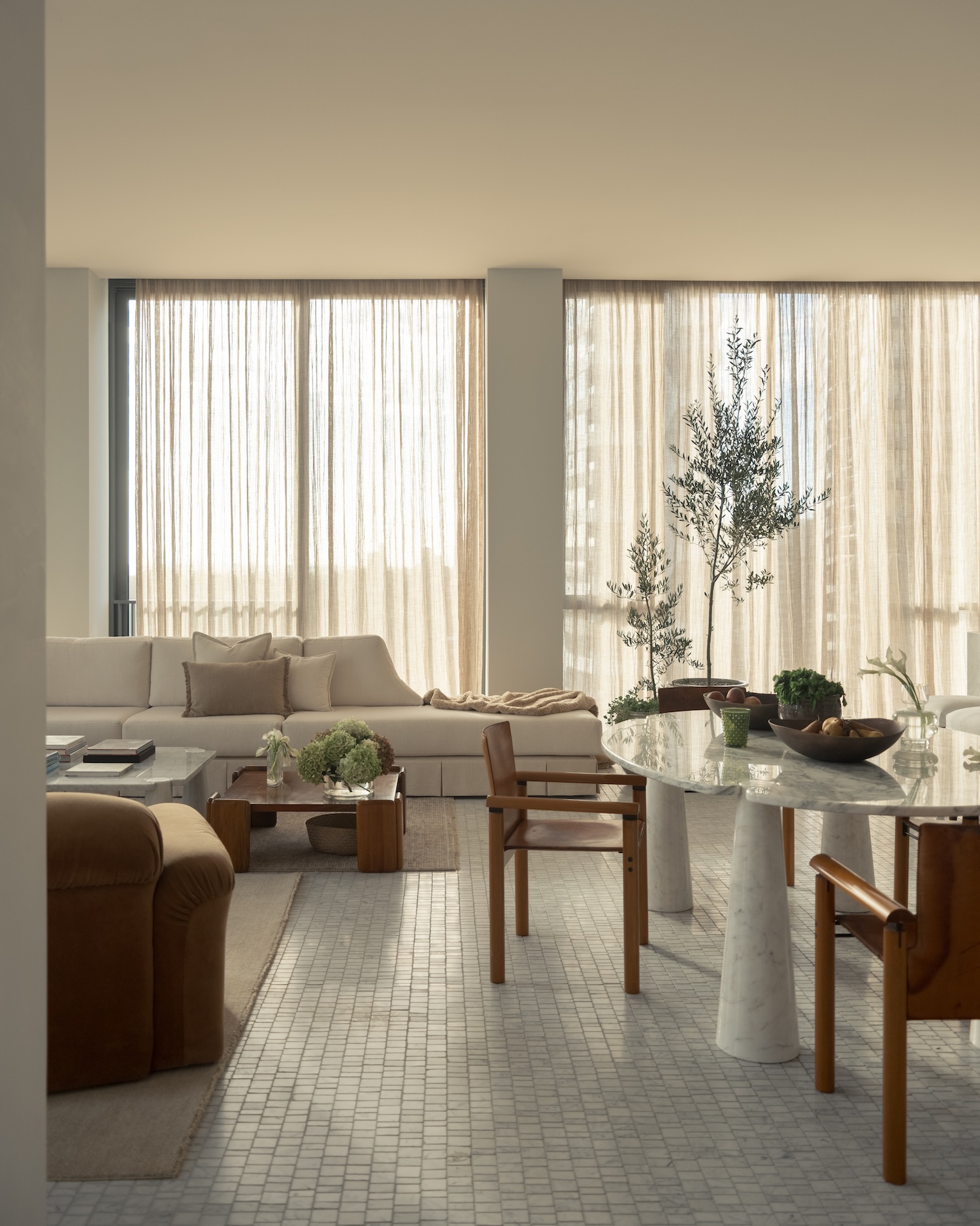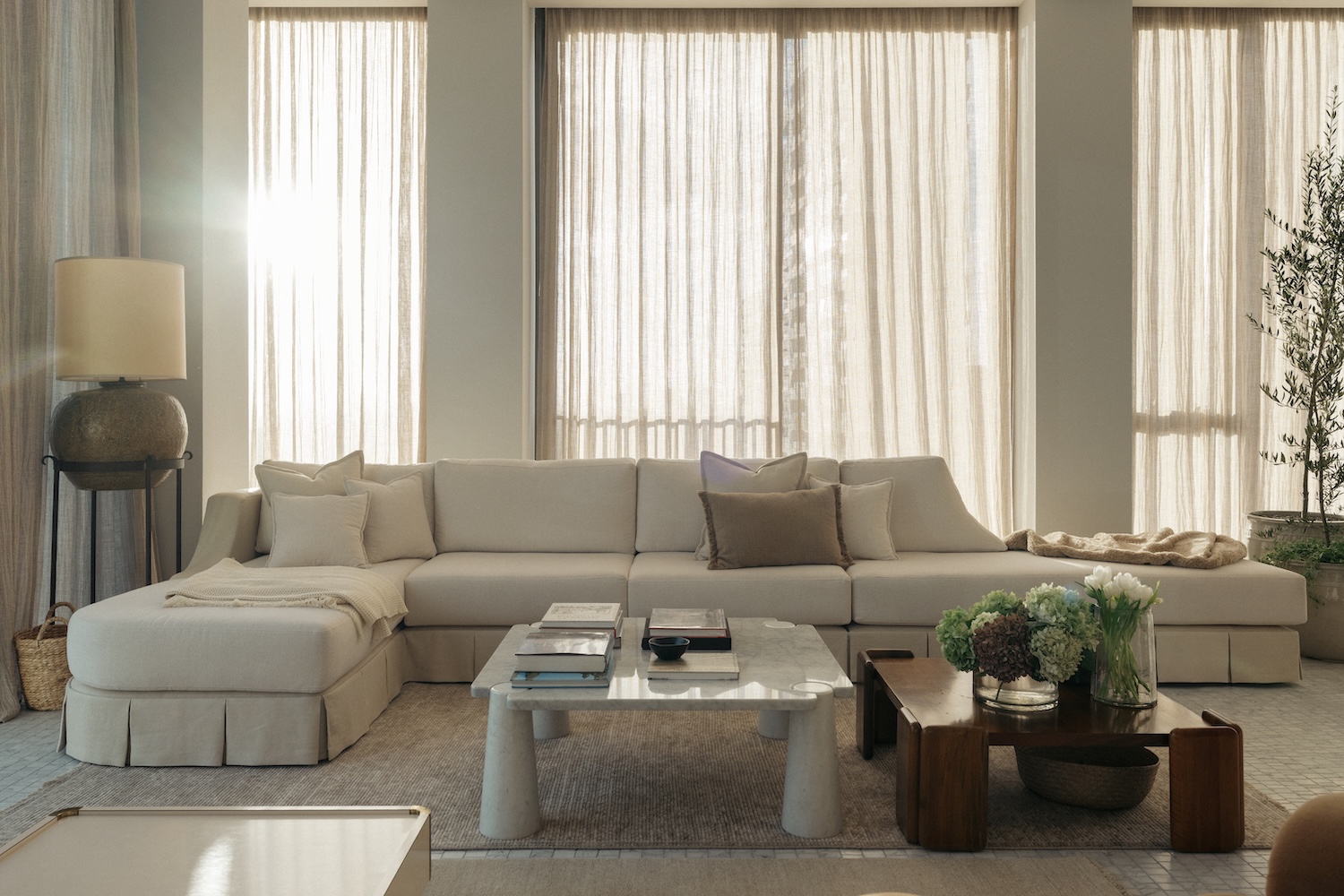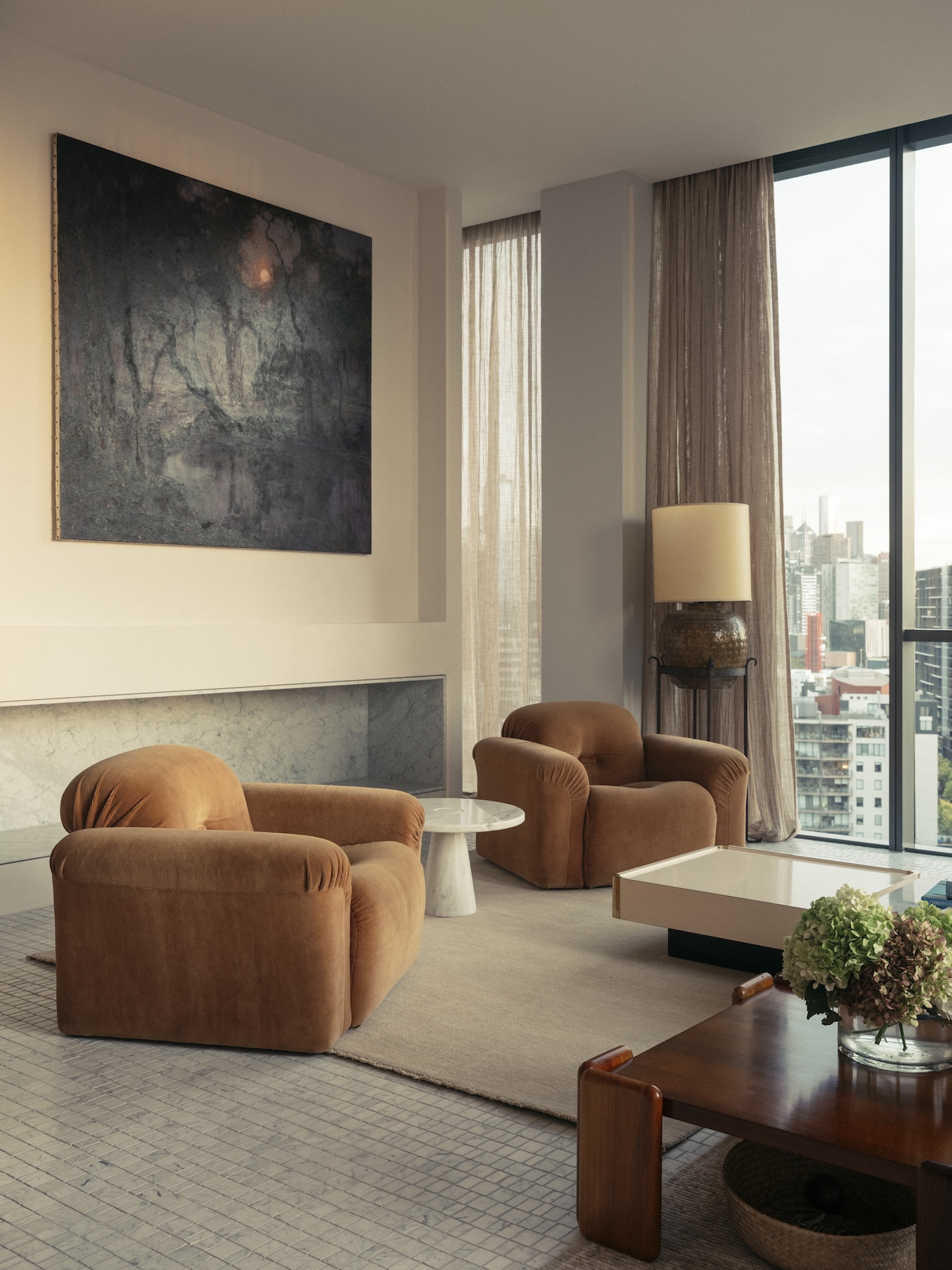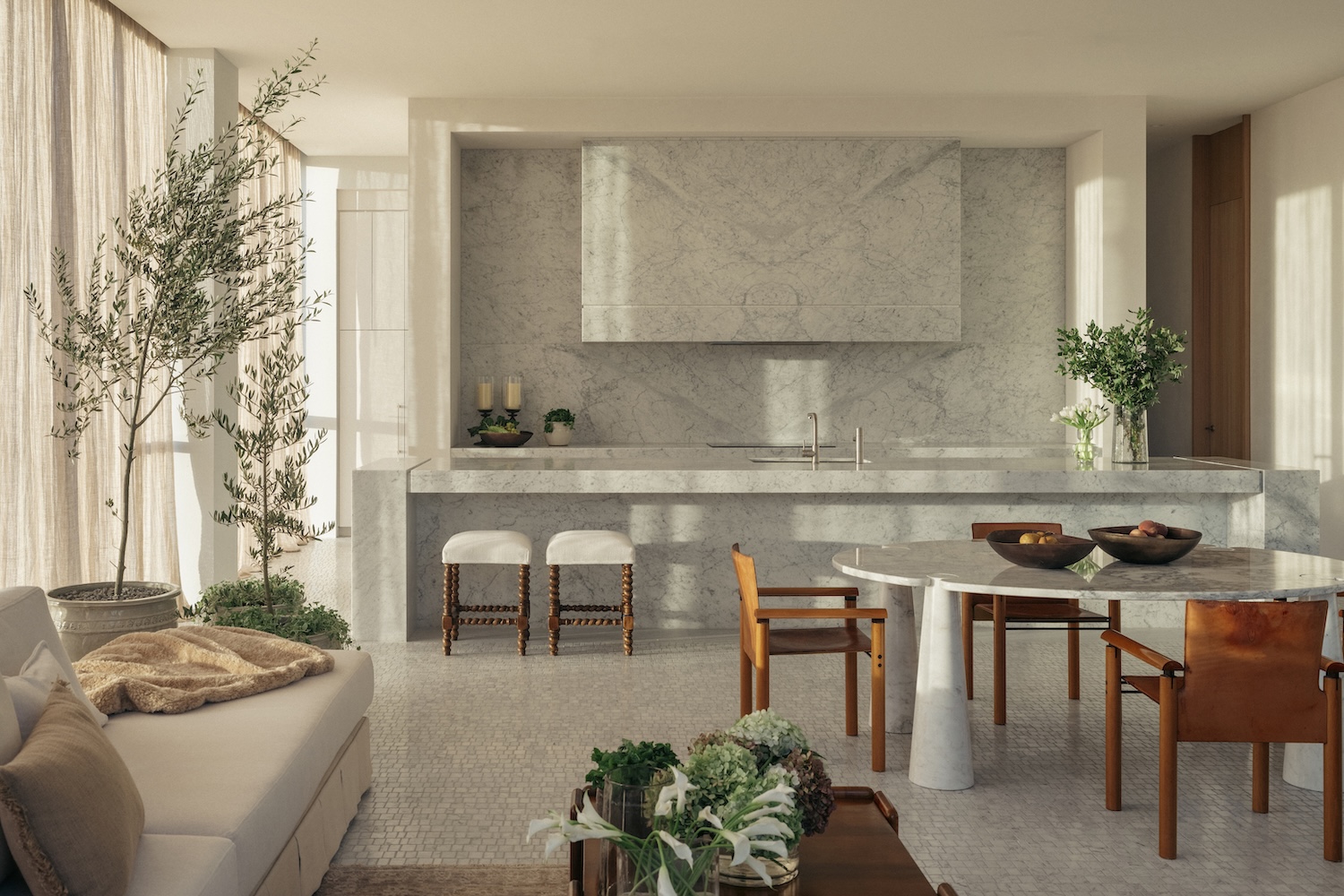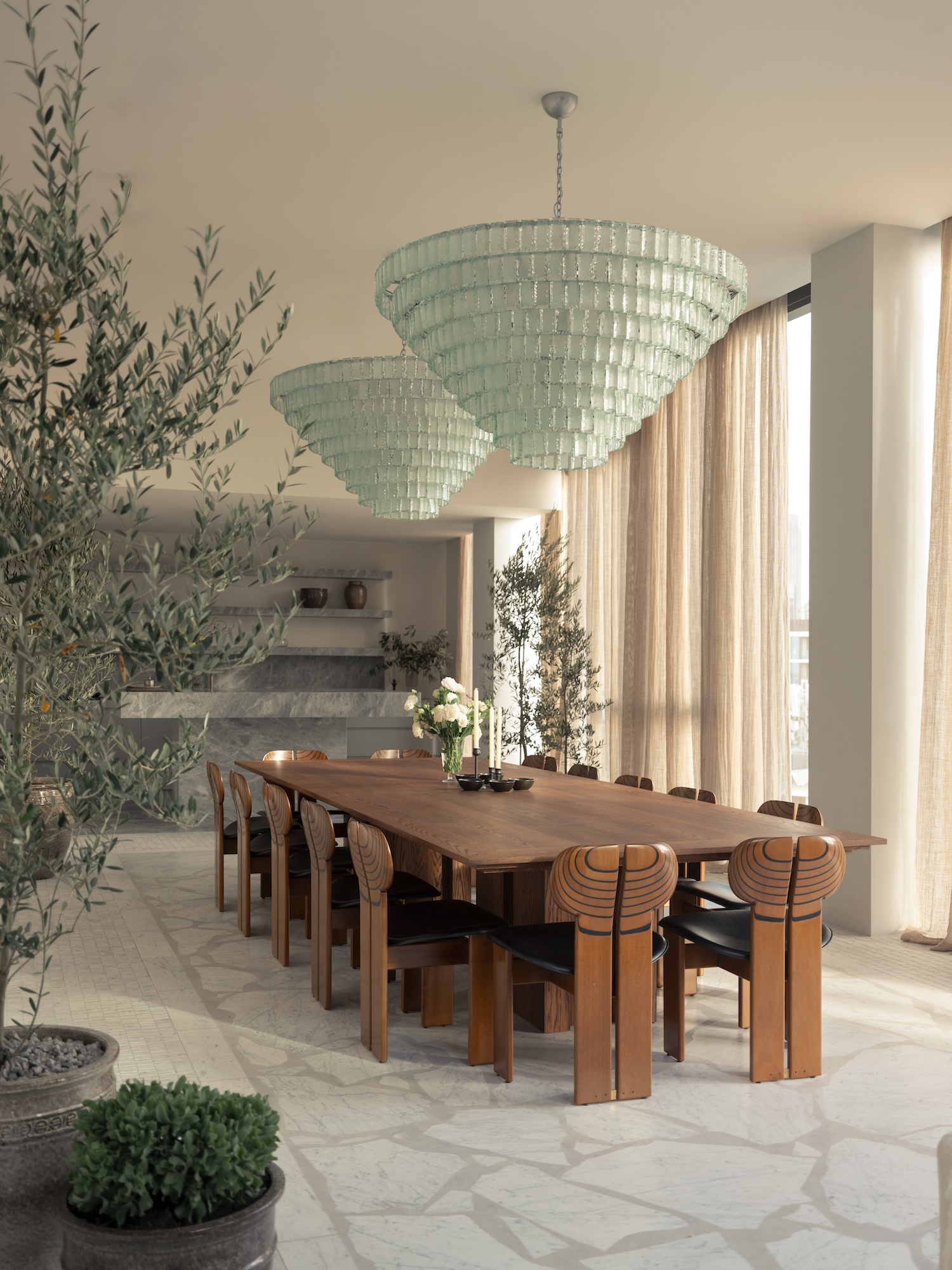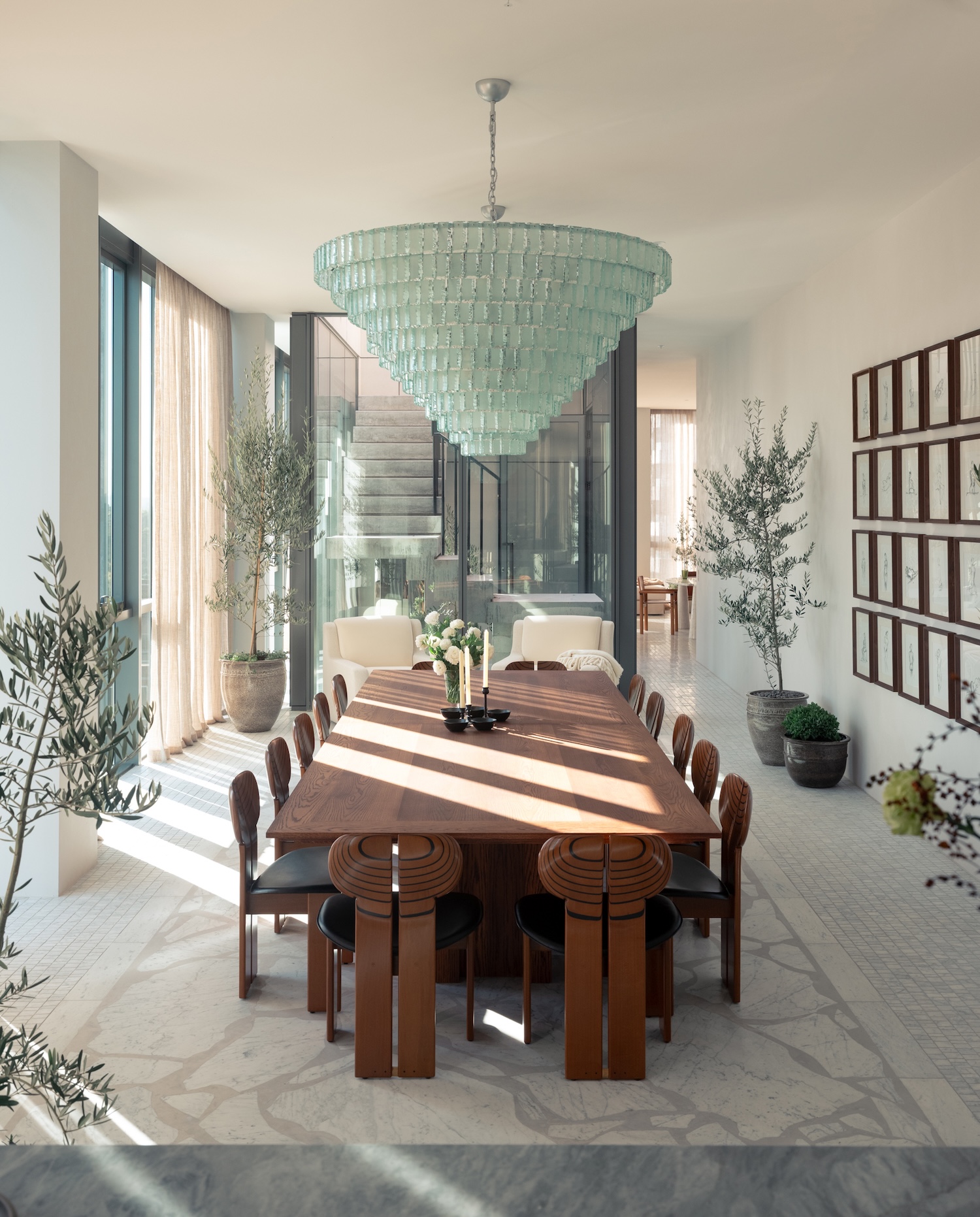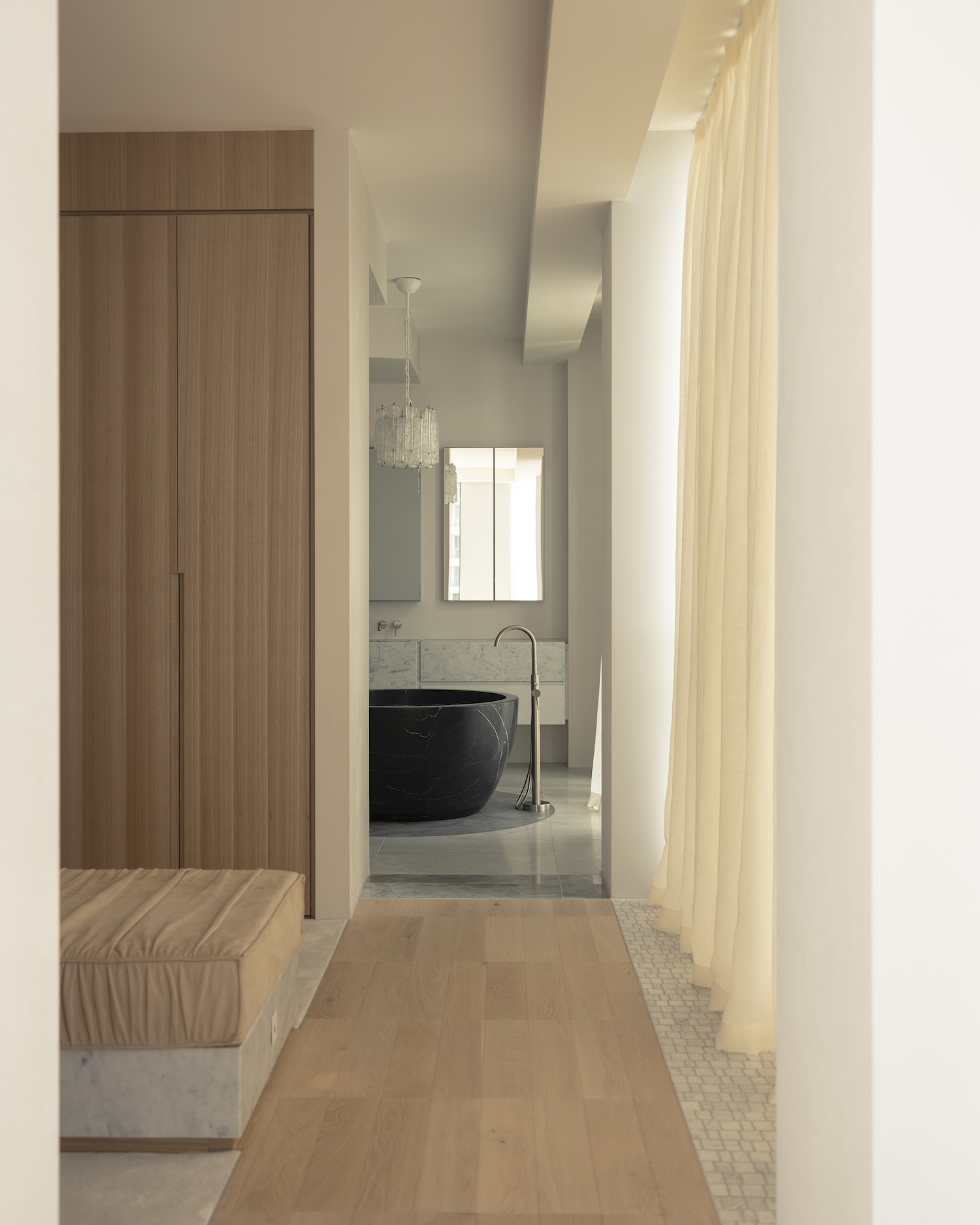The Eighth Penthouse is a minimal penthouse located in Melbourne, Australia, designed by Kennon. The penthouse occupies the entire top floor of its building, commanding a 360-degree panorama that Studio Kennon has choreographed with precision. This is architecture as choreography, with spaces positioned in deliberate response to the sun’s daily journey across Melbourne’s skyline. Living areas face east and north, capturing morning and daytime light—a seemingly obvious choice that reveals Kennon’s commitment to the fundamentals of good living.
“The power of this architecture expresses an interest into the idea of living well,” as noted in the project documentation. This philosophy manifests not just in grand gestures but in the intimate understanding of quotidian rhythms: “How to wake, how to bathe, where to cook and where to rest.” The spatial arrangement becomes a physical manifestation of an ideal daily cadence.
White marble forms the project’s material foundation, appearing in various expressions throughout. In the kitchen, mirrored marble slabs create a monolithic anchor in the main living space, while underfoot, mosaic tiles of the same stone shift scale as they move across thresholds, subtly delineating spatial transitions. This modulation of a single material across different applications demonstrates Kennon’s material literacy—understanding not just what a material is, but what it can become.
The coffee table at the center of the living space exemplifies Kennon’s curation skills, providing both functional surface and sculptural presence that complements rather than competes with the architecture. This thoughtful selection reflects the studio’s broader approach to furnishing the space—each piece contributing to the whole while maintaining its individual integrity.
What distinguishes this project is its controlled play between classical and contemporary languages. Traditional room layouts and architectural expressions are given moments of “mischief and playfulness,” creating tension between convention and innovation. This balance extends to the project’s relationship with luxury—moments of opulence appear and then strategically “withdraw and recede.” It’s an approach that feels particularly resonant with our current cultural moment, where ostentation has largely given way to more nuanced expressions of refinement.
